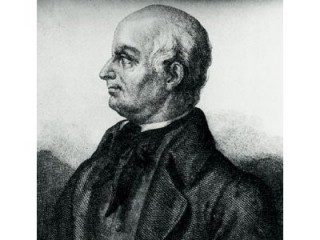
Lazzaro Spallanzani biography
Date of birth : 1729-01-12
Date of death : 1799-02-11
Birthplace : Scandiano, Italy
Nationality : Italian
Category : Arhitecture and Engineering
Last modified : 2011-09-19
Credited as : naturalist, biology, author
The Italian naturalist Lazzaro Spallanzani was one of the founders of modern experimental biology.
Lazzaro Spallanzani was born in Scandiano on Jan. 12, 1729. He entered a Jesuit college at the age of 15 and later studied law at Bologna, but very early he became interested in physics and developed an overall knowledge of nature. He took orders in 1755 and is therefore often referred to as the Abbe Spallanzani. That year he began to teach logic, metaphysics, and classics at Reggio. In 1757 he was appointed to the chair of mathematics and physics at the university there; later he taught at the University of Modena.
In 1765 Spallanzani began publishing his numerous scientific works. Most of them are motivated by a philosophy of science which nowadays could be called reductionist, namely, a belief that most phenomena are reducible to physical and chemical explanation. In 1769 he accepted the chair of natural history at the University of Pavia, remaining at this post until his death on Feb. 11, 1799.
Spallanzani is well known for one of his major works on microscopical observation that concerned the systems of spontaneous generation, and was an attempt to disprove J.T. Needham's and the Comte de Buffon's theory in support of spontaneous generation. Although his experimentation was exact, and he did prove that some organisms can live in a vacuum for many days (anaerobiosis), his theory was not comprehensive enough. Thus Spallanzani did not succeed in establishing in a final way that the theory of spontaneous generation was wrong. He also did important work in embryology. He was an ovarian preformationist, and through his experiments with artificial fertilization using filtered semen he pointed out the need for the physical contact between the spermatozoa and the ovule. He thus disproved the fertilizing power of the seminal fluid. Yet he did not fully understand the process, and in plants he described fertilization as being effected by the spermatic vapor of the pollen and not by any of the visible parts of it. In his studies on regeneration of animals he practically established the modern lines of animal morphology.
Spallanzani also worked on problems of circulation, gastric digestion, respiration, the hearing of bats, the electricity of torpedo fish, and the reproduction of eels. As a result of these studies he gave experimental proof of the action of gastric juice on foodstuffs. He theorized that this action was not putrefaction or vinous fermentation, as others had thought, but acid fermentation; however, he was unable to isolate acid from the gastric mixture. His experiments on respiration provided evidence that tissues use oxygen and release carbon dioxide.
Especially noteworthy is the long trip Spallanzani undertook in Sicily and the neighboring volcanic areas. With systematic measurements and exact physical methods he established that there was nothing mysterious about the fire in the volcanoes; on the contrary, the same physical laws which apply on the surface of the earth are the ones which create volcanoes and which are acting in the heart of the earth. He succeeded in measuring the heat in one of the volcanoes and expressing it in degrees Fahrenheit, which were used in regular terrestrial measuring. His description of these areas is rich—not only in describing nature but also the social habits, customs, and crafts of the inhabitants and the ways of primitive science.
















